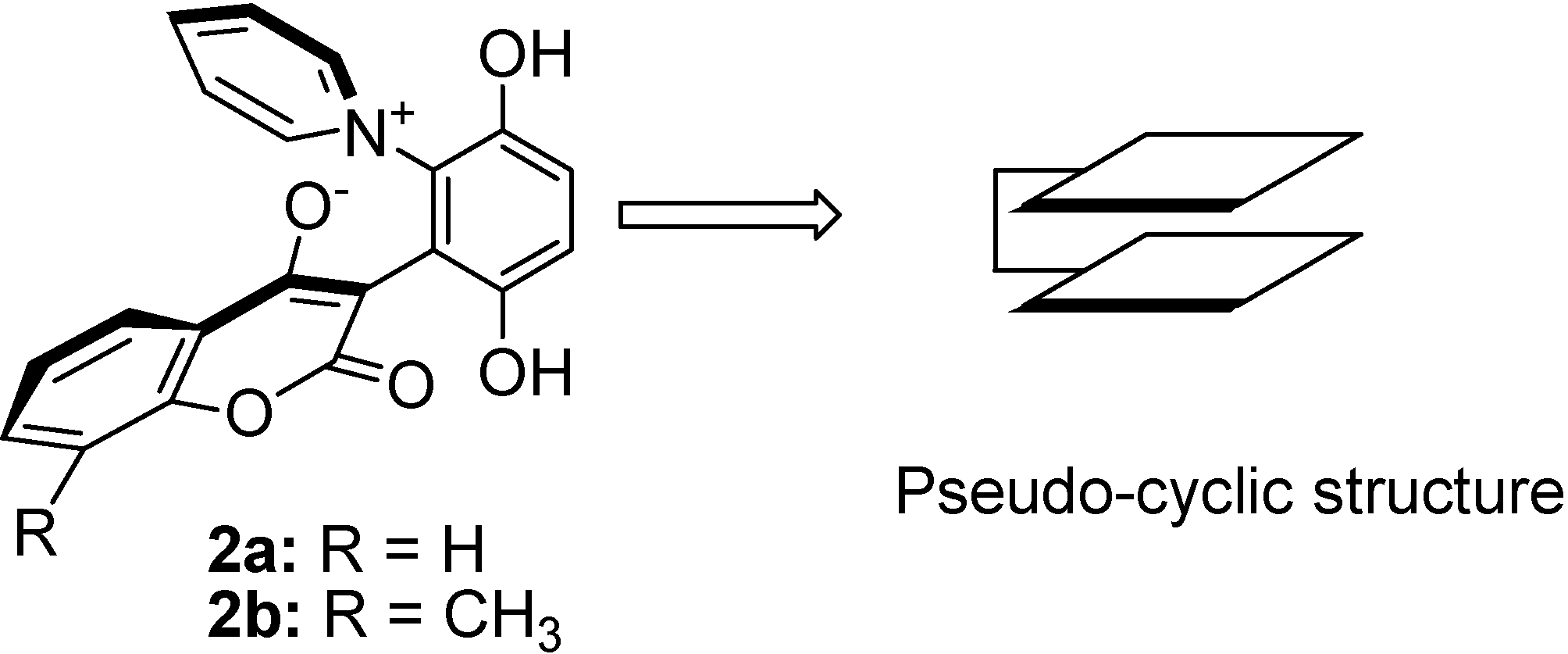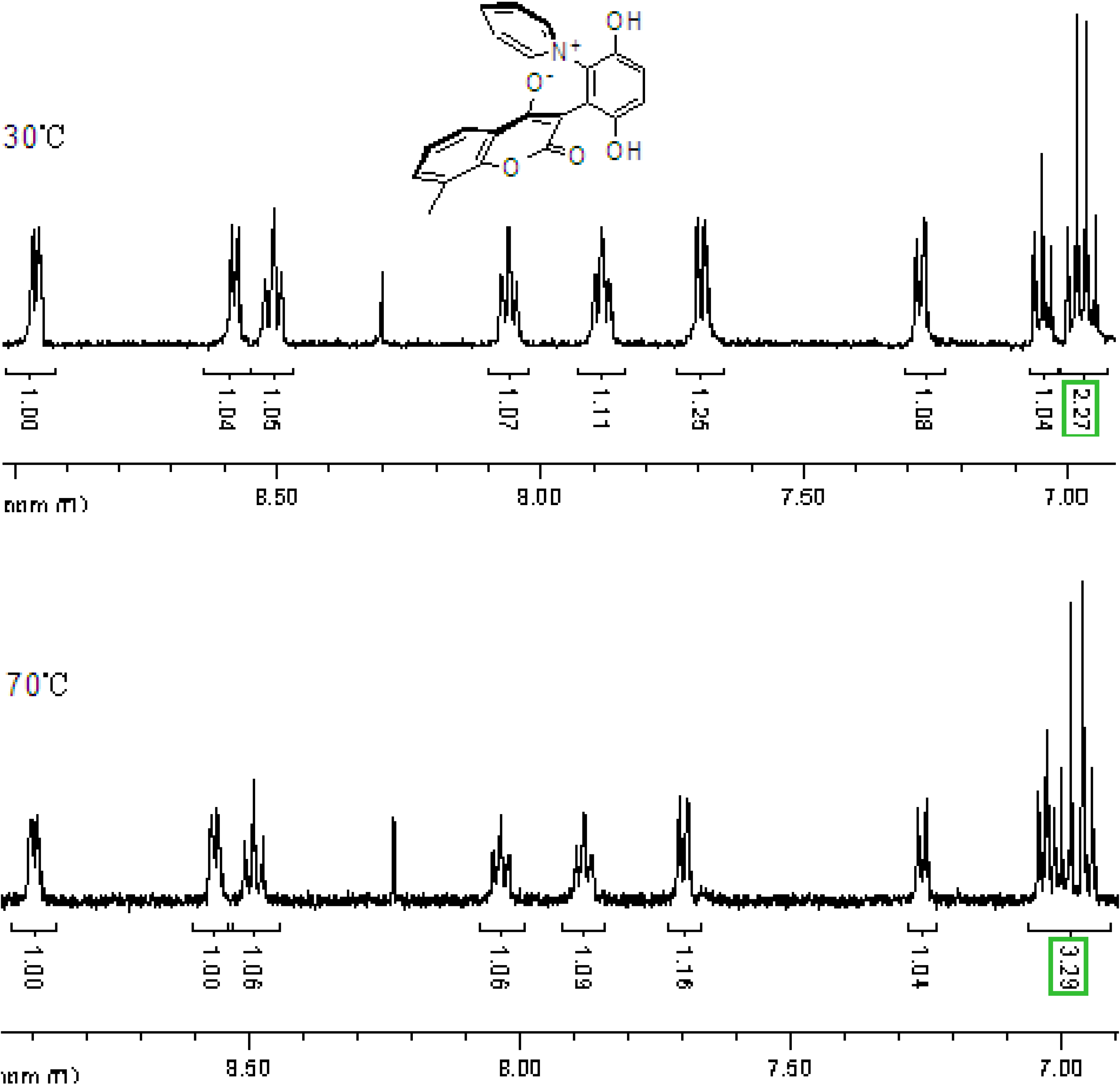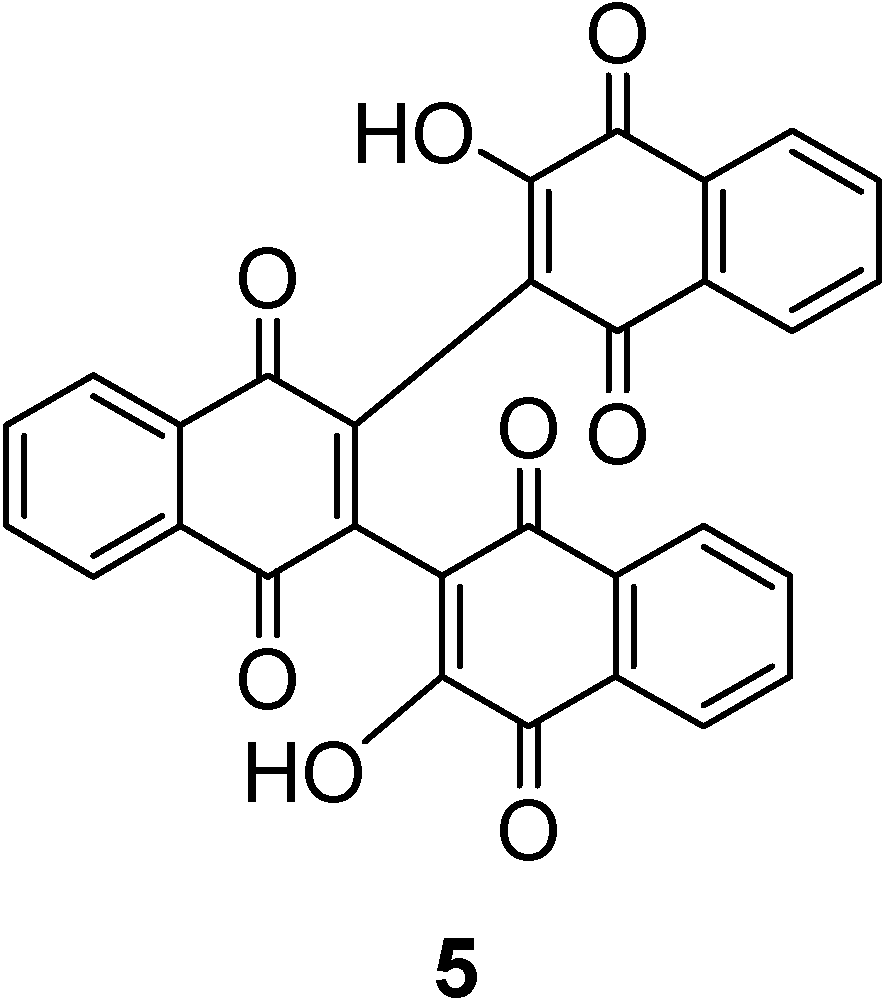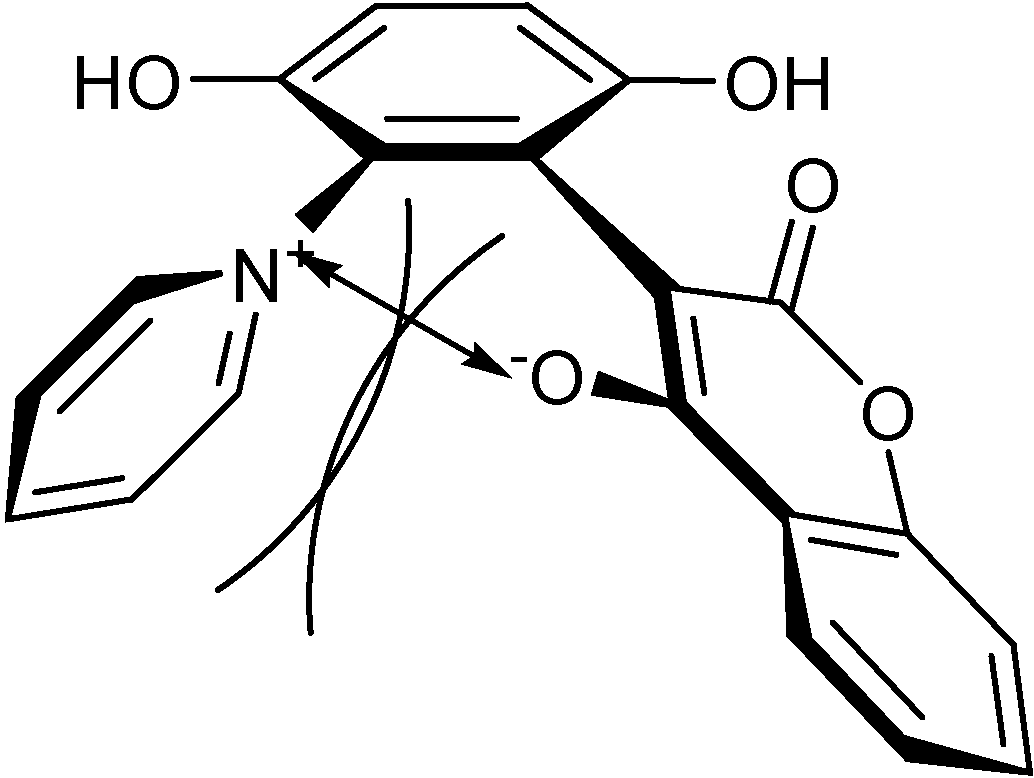Pseudo-cyclic Face-to-face Rigid Structure Caused by the Intramolecular Ion Pair Effect
Abstract
:1. Introduction


2. Results and Discussion

|

|





3. Experimental
3.1. General
3.2. General procedure: synthesis of 4-hydroxycoumarin zwitterions












Acknowledgements
References and Notes
- Pye, P.J.; Rossen, K.; Reamer, R.A.; Tsou, N.N.; Volante, R.P.; Reider, P.J. A new planar chiral bisphosphine ligand for asymmetric catalysis: highly enantioselective hydrogenations under mild conditions. J. Am. Chem. Soc. 1997, 119, 6207–6208. [Google Scholar] [CrossRef]
- Rossen, K.; Pye, P.J.; Maliakal, A.; Volante, R.P. Kinetic resolution of rac-4,12-dibromo[2.2]-paracyclophane in a palladium[2.2]phanephos catalyzed amination. J. Org. Chem. 1997, 62, 6462–6463. [Google Scholar] [CrossRef]
- Pye, P.J.; Rossen, K.; Reamer, R.A.; Volante, R.P.; Reider, P.J. [2.2]Phanephos-rutherium(II) complexes: Highly active asymmetric catalysts for the hydrogenation of β-ketoesters. Tetrahedron Lett. 1998, 39, 4441–4444. [Google Scholar] [CrossRef]
- Burk, M.J.; Hems, W.; Herzberg, D.; Malan, C.; Zanotti-Gerosa, A. A catalyst for efficient and highly enantioselective hydrogenation of aromatic, heteroaromatic, and α,β-unsaturaed ketone. Org. Lett. 2000, 2, 4173–4176. [Google Scholar] [CrossRef]
- Roche, A.J.; Dolbier, W.R., Jr. Electrophilic substitution of 1,1,2,2,9,9,10,10-octafluoro[2.2]-paracyclophane. J. Org. Chem. 1999, 64, 9137–9143. [Google Scholar] [CrossRef]
- Roche, A.J.; Dolbier, W.R., Jr. Multiple electrophilic substitution of 1,1,2,2,9,9,10,10-octafluoro-[2.2]-paracyclophane. J. Org. Chem. 2000, 65, 5282–5290. [Google Scholar] [CrossRef]
- Dolbier, W.R., Jr.; Duan, J.-X.; Abboud, K.; Ameduri, B. Synthesis and reactivity of a novel, dimeric derivative of octafluoro[2.2]paracyclophane. A new source of trifluoromethyl radicals. J. Am. Chem. Soc. 2000, 122, 12083–12086. [Google Scholar] [CrossRef]
- Majid, N.; Dabral, S.; McDonald, J.F. The parylene-aluminum multilayer interconnection system for wafer scale integration and wafer scale hybrid packaging. J. Eletron. Mater. 1989, 18, 301–311. [Google Scholar] [CrossRef]
- Williams, K.R. Themal decomposition of poly(α,α,α’,α’-tetrafluoro-p-xylylene) in nitrogen and oxygen. J. Thermal Anal. 1997, 49, 598–594. [Google Scholar]
- Barbara, P.F.; Olson, E.J.C. Experimental electron transfer kinetics in DNA environment. Adv. Chem. Phys. 1999, 107, 647–676. [Google Scholar]
- Treadway, C.R.; Hill, M.G.; Barton, J.K. Charge transport through a molecular π-stack: double helical DNA. Chem. Phys. 2002, 281, 409–428. [Google Scholar] [CrossRef]
- Boon, E.M.; Barton, J.K. Charge transport in DNA. Curr. Opin. Struct. Biol. 2002, 12, 320–329. [Google Scholar] [CrossRef]
- Zhang, S.-L.; Huang, Z.-S.; An, L.-K.; Bu, X.-Z.; Ma, L.; Li, Y.-M.; Chan, A.S.C.; Gu, L.-Q. Synthesis of zwitterionic 4-hydroxycoumarin derivatives through a unique reaction of 4-hydroxy-coumarins with p-benzoquinone and pyridine. Org. Lett. 2004, 6, 4853–4855. [Google Scholar] [CrossRef]
- Jursic, B.S.; Neumann, D.M.; Moore, Z.; Stevens, E.D. Unique charge-separated pyridine-barbituric acid zwitterions. J. Org. Chem. 2002, 67, 2372–2374. [Google Scholar] [CrossRef]
- Emadi, A.; Harwood, J.S.; Kohanim, S.; Stagliano, K.W. Regiocontrolled synthesis of the trimeric quinone framework of conocurvone. Org. Lett. 2002, 4, 521–524. [Google Scholar] [CrossRef]
- Sample Availability: Samples of the compounds are available from the authors.
© 2009 by the authors; licensee Molecular Diversity Preservation International, Basel, Switzerland. This article is an open-access article distributed under the terms and conditions of the Creative Commons Attribution license ( http://creativecommons.org/licenses/by/3.0/).
Share and Cite
Zhang, S.-L.; Huang, Z.-S.; Gu, L.-Q. Pseudo-cyclic Face-to-face Rigid Structure Caused by the Intramolecular Ion Pair Effect. Molecules 2009, 14, 1546-1560. https://doi.org/10.3390/molecules14041546
Zhang S-L, Huang Z-S, Gu L-Q. Pseudo-cyclic Face-to-face Rigid Structure Caused by the Intramolecular Ion Pair Effect. Molecules. 2009; 14(4):1546-1560. https://doi.org/10.3390/molecules14041546
Chicago/Turabian StyleZhang, Sheng-Ling, Zhi-Shu Huang, and Lian-Quan Gu. 2009. "Pseudo-cyclic Face-to-face Rigid Structure Caused by the Intramolecular Ion Pair Effect" Molecules 14, no. 4: 1546-1560. https://doi.org/10.3390/molecules14041546




